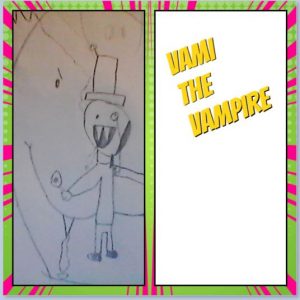Rationale:
I am the Teacher Librarian at a K-5 English language Elementary School. I have been in this position for a total of 2.75 years with an 18 month maternity break in the middle. I would like this presentation to be shared with staff at my school to encourage collaboration with the Teacher Librarian and give teachers confidence to try makerspace activities in the library or in their own classroom. The story “making” concept introduces inquiry skills in a non-threatening way and one of my goals in my school is to foster and encourage inquiry-based teaching and learning. In addition, I have heard teachers express their need for more information and guidance for how to incorporate ADST curriculum. Finally, a school and district goal this year is literacy. I really connected with the Story “making” in that for such a simple and easy to implement idea, it meets topics of focus for my school and has the ability to meet curricular topics in multiple areas. Therefore, I have followed the StoryMaking framework quite closely and incorporated other materials from the course, such as multi-modal learning and expression of ideas and how StoryMaking allows for diverse learning opportunities.
Reflection:
For my presentation, I chose to use Canva as I’ve heard good things about it and wanted to try it out. I thought choosing the “presentation” mode would be suitable to present these ideas to staff as I would like to make the ideas clear but not overwhelm teachers with the information. I liked using Canva and also created my blog header with it. I would use it again for other purposes in the future now.
I spent quite a bit of time exploring different digital tools to find ones that I felt were easy to implement for teachers and students to present learning from story “making”. From what I have heard, I thought that Storybird would be a good webtool but didn’t realize that it was a subscription. So, I tried Lark by Storybird as I hear it is free but apparently it is only for iPads and iPhones. We do have iPads at school so it may be a possibility; however, classes mostly use our student devices which are microsoft products. Therefore, I decided to use Storyboard That because our school district uses Microsoft and all students have an account. I am hoping that students will be able to automatically sign-in once they are logged on to our student devices. Book creator seems good because it has the option to log-in with a microsoft account which all students have in our district. Also, if the teacher has an account, the students use the teacher code to connect with the teacher so their books can be easily shared. I noticed that once I downloaded my presentation to insert into my blog, the book from BookCreator is not able to be viewed however it works when I present it in presentation mode in Canva. Therefore, I have inserted a screen capture below with a hyperlink. I have published the book to the public so it should work.
Finally, I have shared this presentation with my principal and she is excited for it to be shared with staff. As this is a presentation, I fully expect that there will be rich discussion with teachers as I explain StoryMaking and how it can be implemented in the Library Learning Commons with any classes throughout our school.
Works cited:
4 Principles Of Student-centered Learning. TeachThought. (2019). Retrieved 21 November 2020, from https://www.teachthought.com/.
Applied Design, Skills, and Technologies | Building Student Success – BC’s New Curriculum. Curriculum.gov.bc.ca. (2020). Retrieved 14 November 2020, from https://curriculum.gov.bc.ca/curriculum/adst.
Bradshaw, J., (2020). Graphic Novels for Kids: The 13 best graphic novel series. Everyday Reading. Retrieved 15 November 2020, from https://everyday-reading.com/graphic-novels-for-kids/.
Canva. (2020). Blog header [Image].
Compton, M., & Thompson, R. (2018). Storymaking: A Maker Movement Approach to Literacy for Early Learners [Ebook]. Redleaf Press.
Davidson, A. (2018). How do Makerspaces heighten student engagement?. Edcan.ca. Retrieved 21 November 2020, from https://www.edcan.ca/articles/makerspaces-heighten-student-engagement/.
Good, S., Araujo, J., Shuster, L., & Meredith, A. (2019). Story Studio: Collaborative Inquiry. Presentation, Burnaby School District.
Media Literacy Fundamentals. MediaSmarts. (2020). Retrieved 21 November 2020, from https://mediasmarts.ca/digital-media-literacy/general-information/digital-media-literacy-fundamentals/media-literacy-fundamentals.
Moorefield-Lang, H., & Kitzie, V. (2018). Makerspaces for All: Serving Lgbtq Makers in School Libraries. Knowledge Quest, 47(1), 46-50. Retrieved 21 November 2020, from.
Postmodern picturebook list. Literacy Clinic Education. (2013). Retrieved 15 November 2020, from https://literacyclinic.education.gsu.edu/files/2013/10/Postmodern-Picture-Book-List.pdf.
Serafini, F. (2012). Reading multimodal texts in the 21st century. Research In Schools, 19(1), 26-32. Retrieved 15 November 2020, from.
Weisgrau, J. (2015). School libraries and makerspaces: can they coexist? [Blog]. Retrieved 14 November 2020, from https://www.edutopia.org/blog/school-libraries-makerspaces-coexist-josh-weisgrau.
UBC. (Winter 2020). ” Learning from Multi-Modal Texts: a look at new literacies.” Module 4 in LLED 462 Canvas Online Classroom.
UBC. (Winter 2020).”Supporting Learners Through the Library: Critical Literacy.” Module 5 in LLED 462 Canvas Online Classroom.

